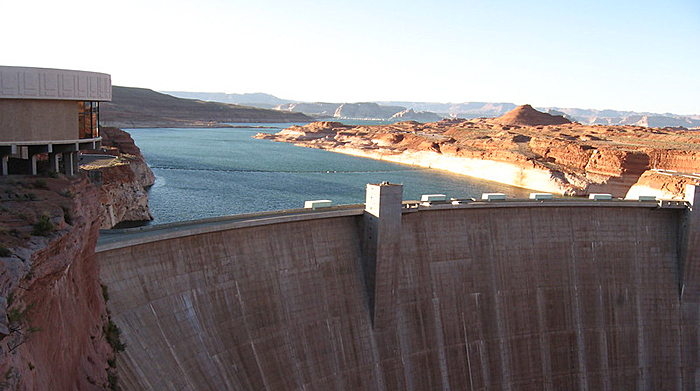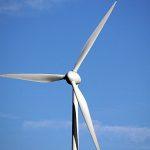Drought Threatens to Take Glen Canyon Dam Turbines Offline

Image courtesy of Ken Lund courtesy of Flickr under creative commons license, resized to 700 x 391 pixels.
I’ve written about the impact of drought conditions on hydropower plants in previous posts, and now we can add the 8 turbines that are part of the Glen Canyon Dam in the Southwest to the list of threatened generation sources. The turbines can generate 1,300 MW when operating at full capacity, which serves as both a baseload and load-following source. Unfortunately, it does not appear as though “full capacity” will be the reality anytime soon.
Why the Glen Canyon Dam Turbines are at Risk of Shutting Down
The dam, located on Lake Powell, an artificial reservoir in Arizona and Utah along the Colorado River, is at risk because the lake’s surface level has dropped to within 33 feet of the minimum level needed to generate power. Said another way, Lake Powell is only 25% full. This is the first time that the water level has been this low since the reservoir was filled in the 1960’s.
The recession in water levels is a problem even without crossing this minimum water threshold – simply put, as the water level recedes, the turbines cannot generate power at full capacity. For example, in the 1990s, the dam produced as much as 7,000 gigawatt hours per year, enough to power nearly 600,000 homes. In 2021, it was down to just 3,000 gigawatt hours.
Obviously, if the dam’s capacity is reduced or eliminated, the Western Area Power Administration (WAPA), which operates the power market in the area, would be forced to purchase more expensive power, resulting in higher electric bills for customers.
Federal officials have been trying to counteract the impact of the drought by doing things such as installing turbine river outlet tubes lower on the dam, which would allow power to be generated even if the lake drops below minimum levels, but this is a temporary fix and has its own set of challenges as well.
This is really sad. There is simply no line of site to bringing the Glen Canyon Dam turbines back up to full capacity. And unfortunately, it is highly likely that the situation will get worse before it gets better.



